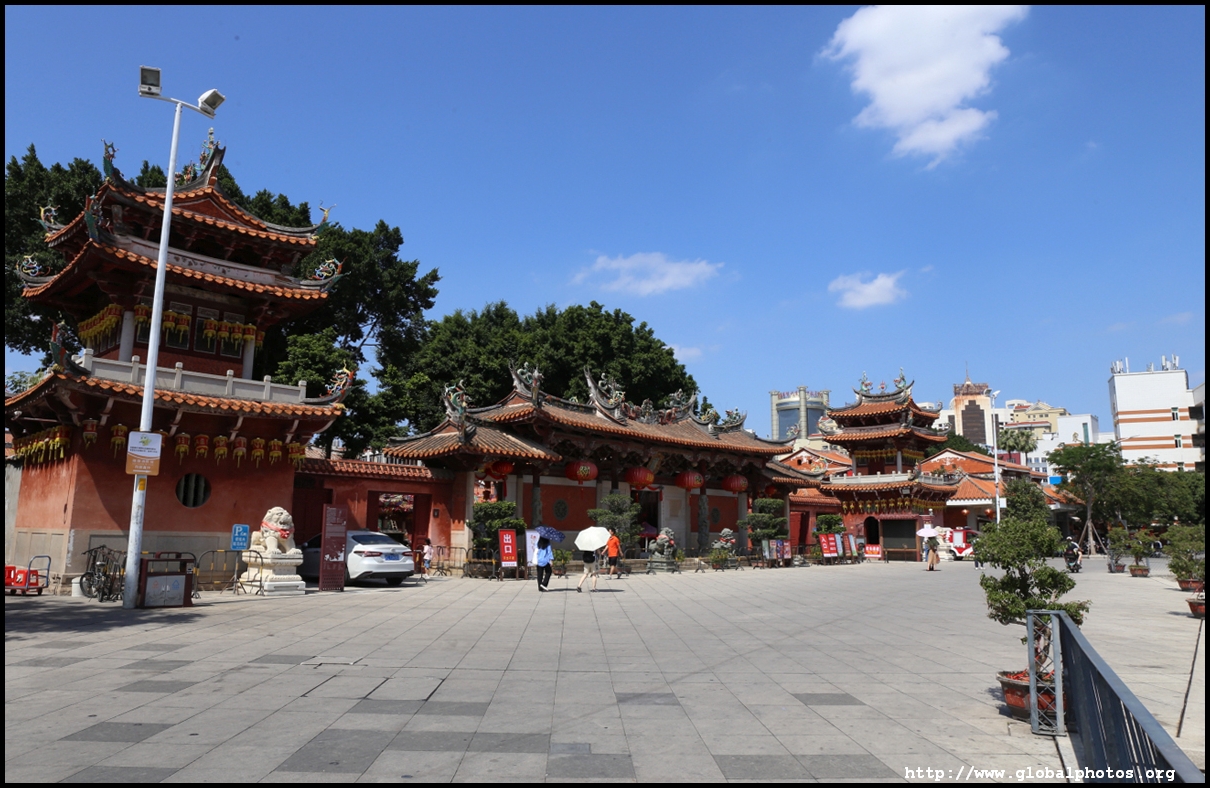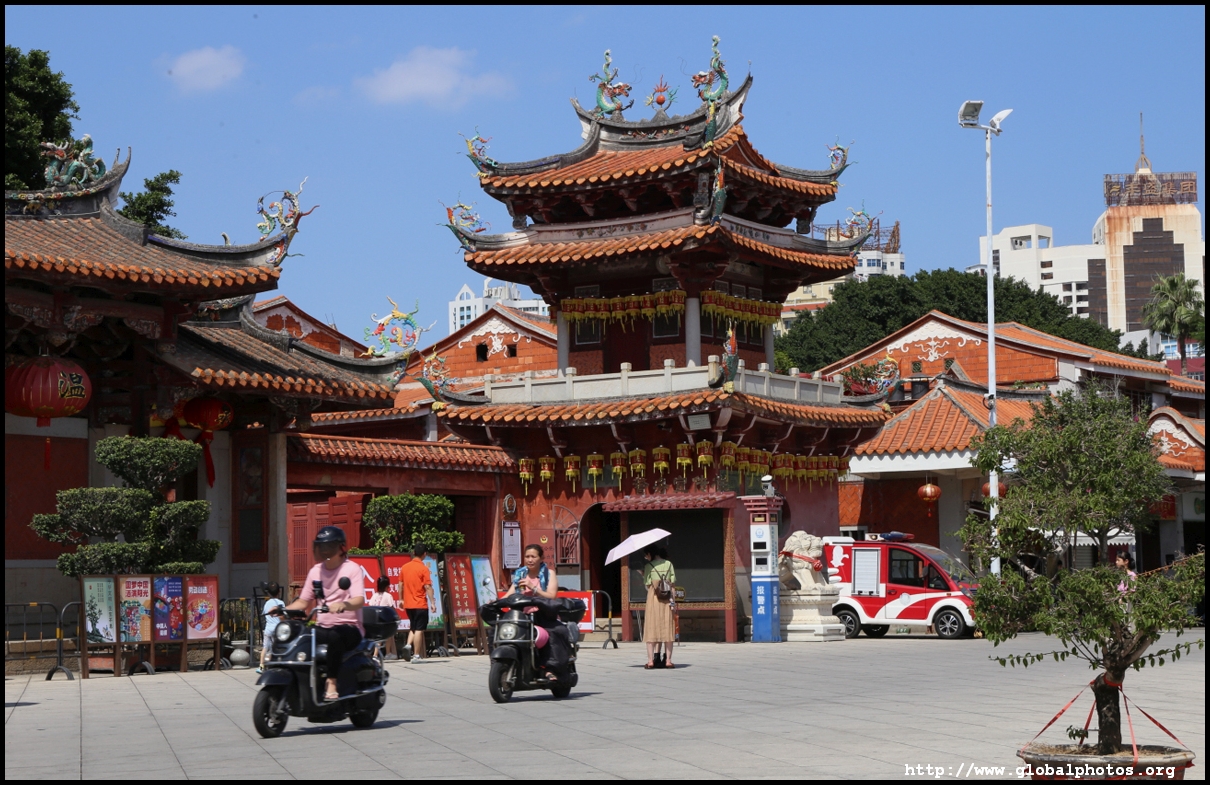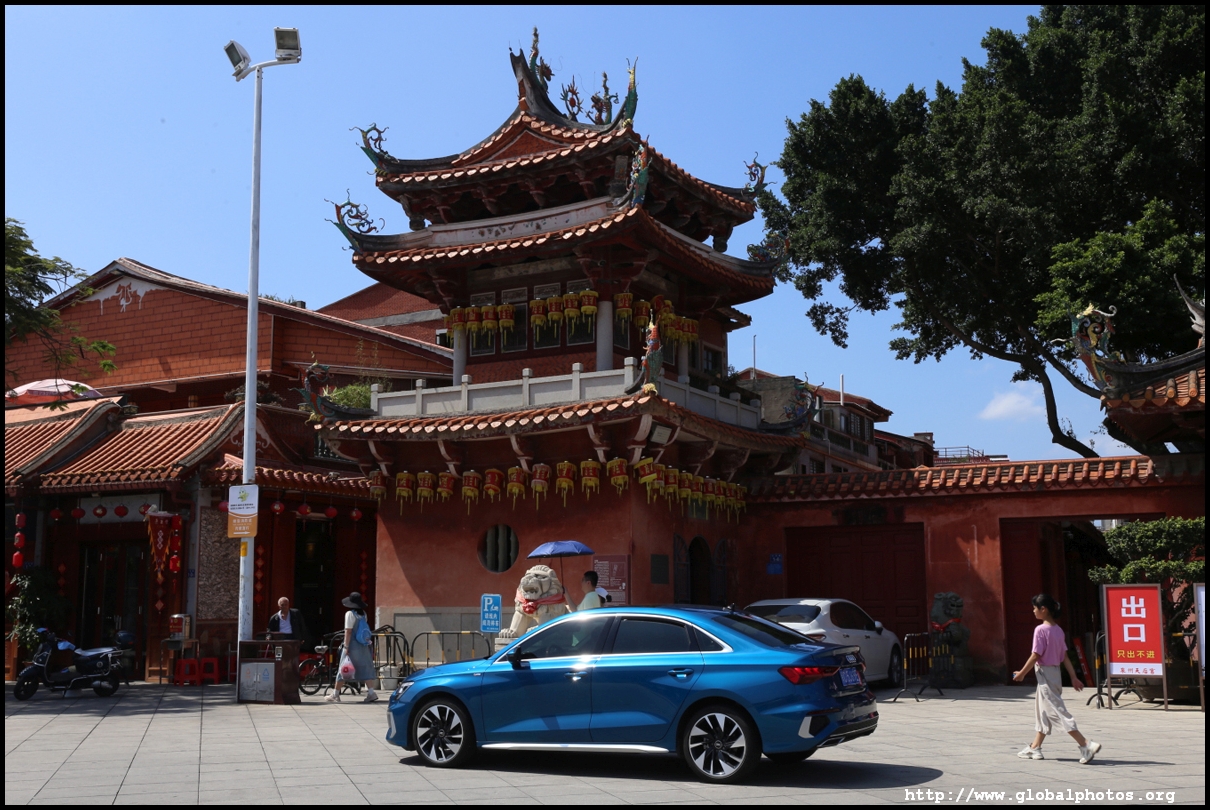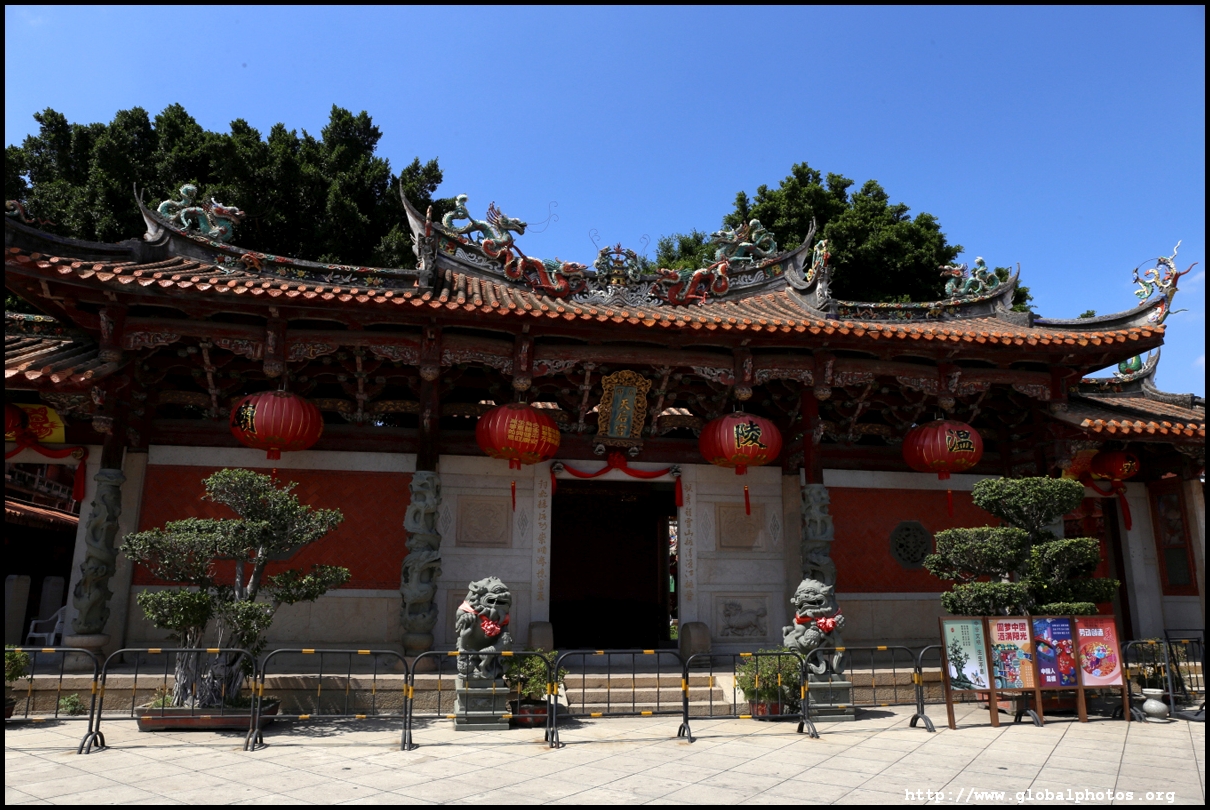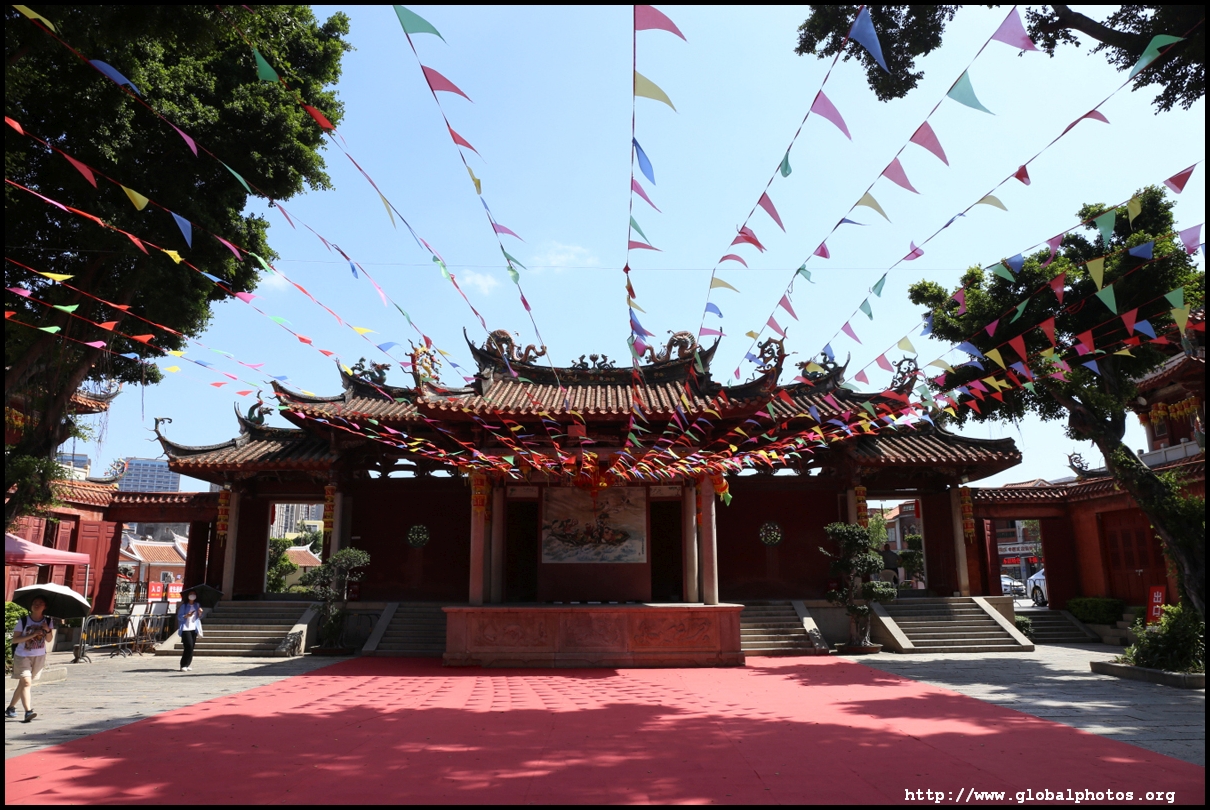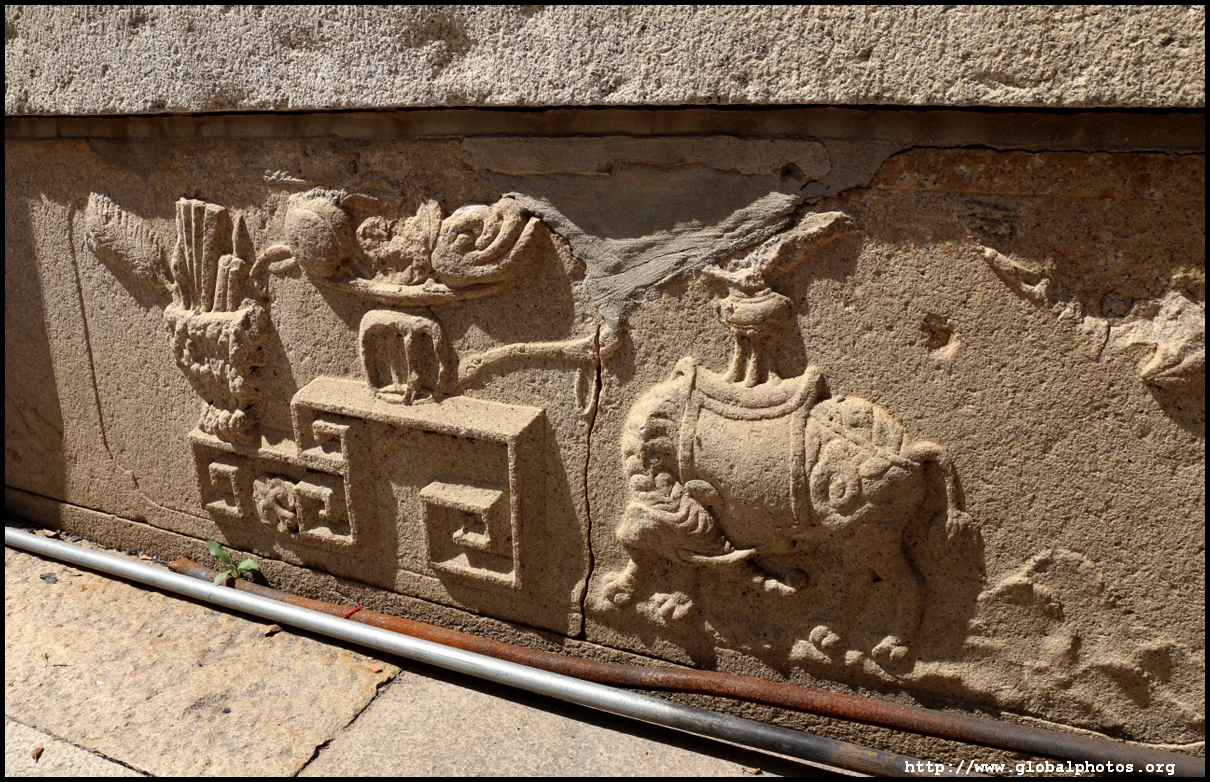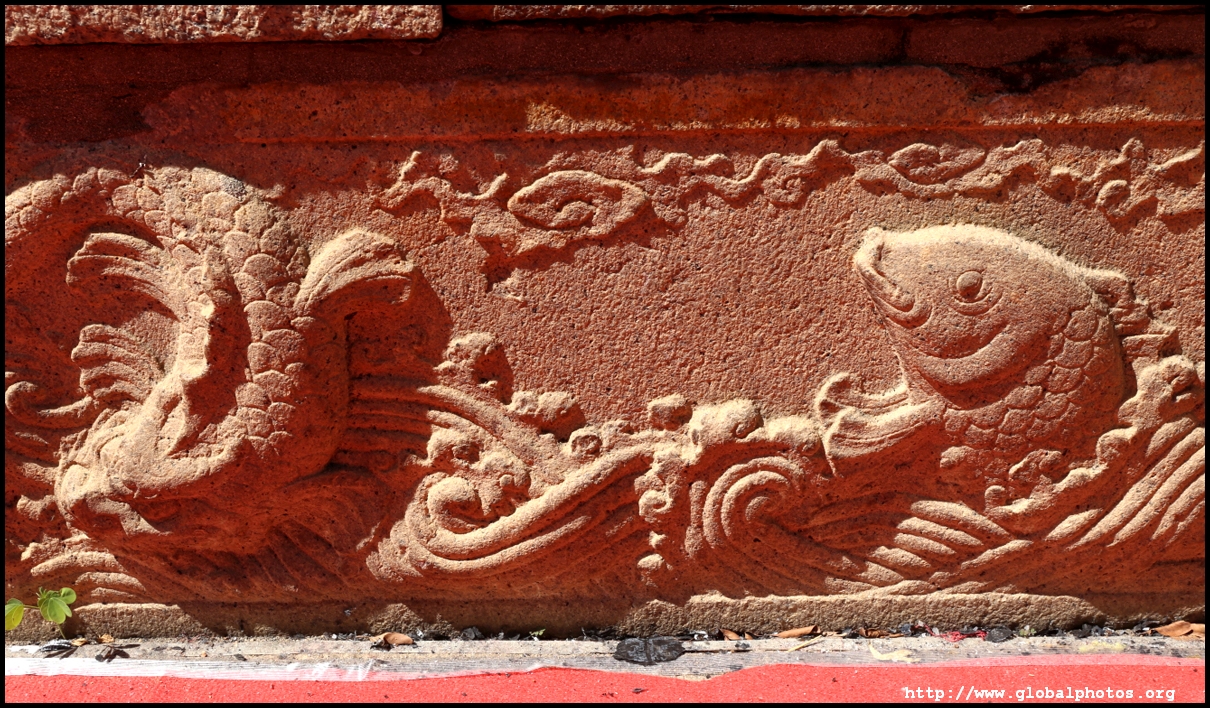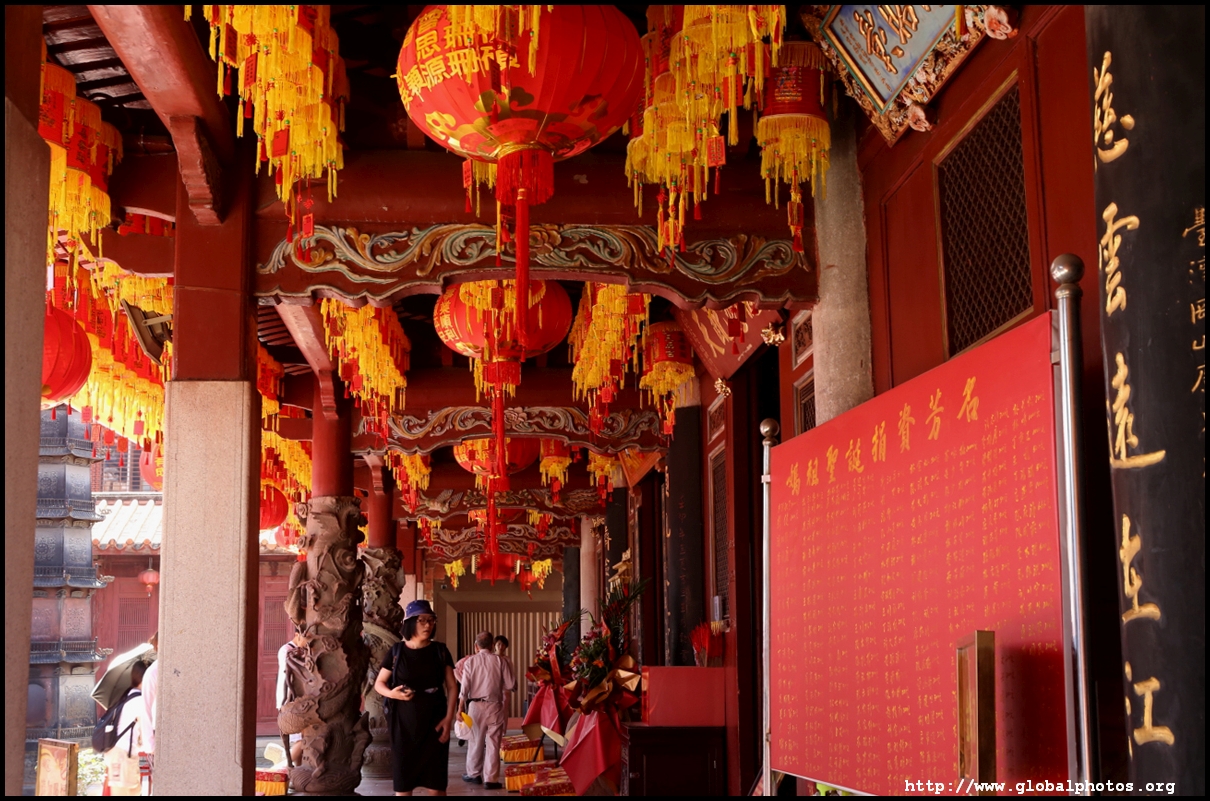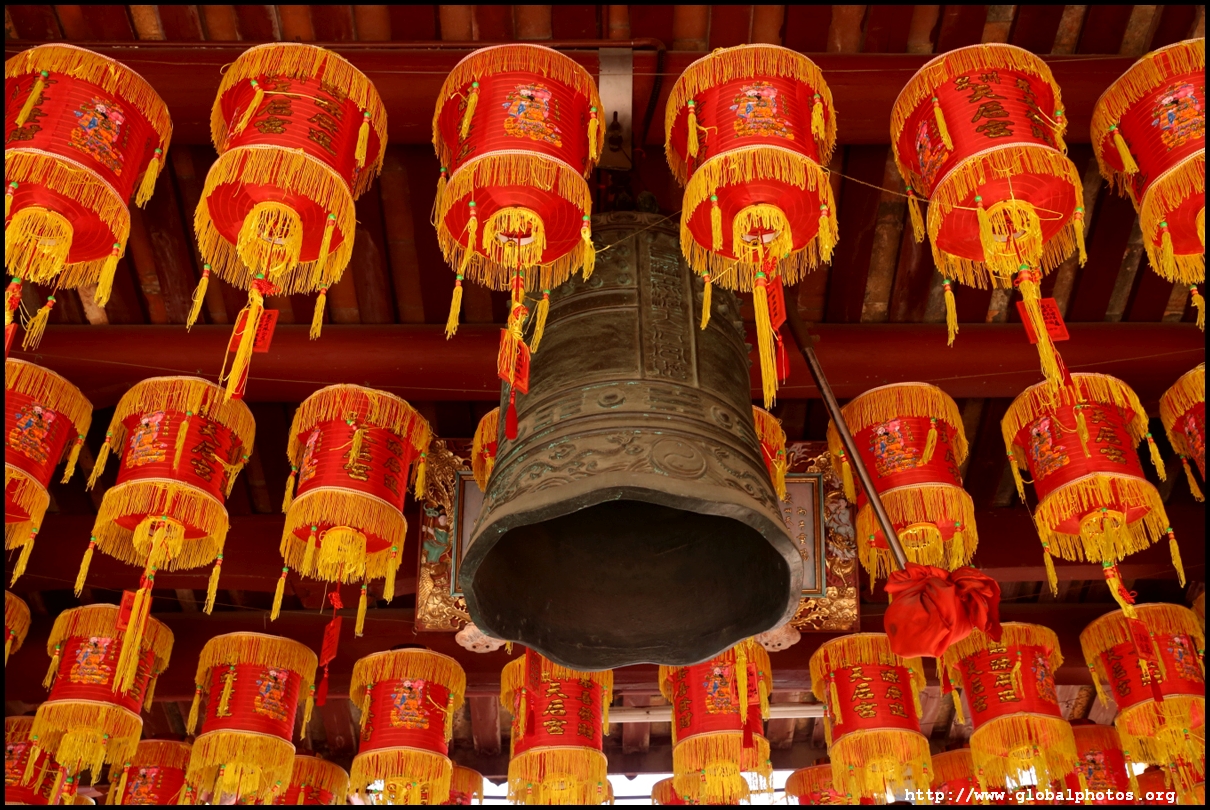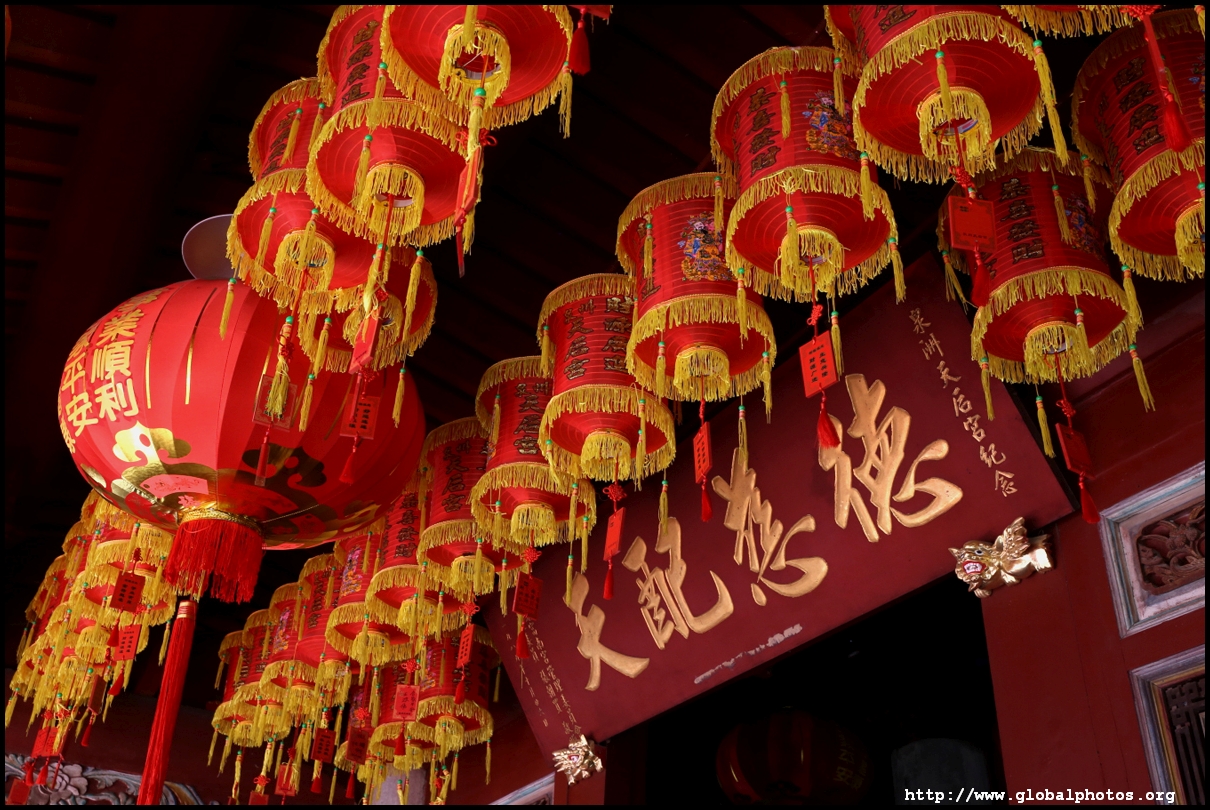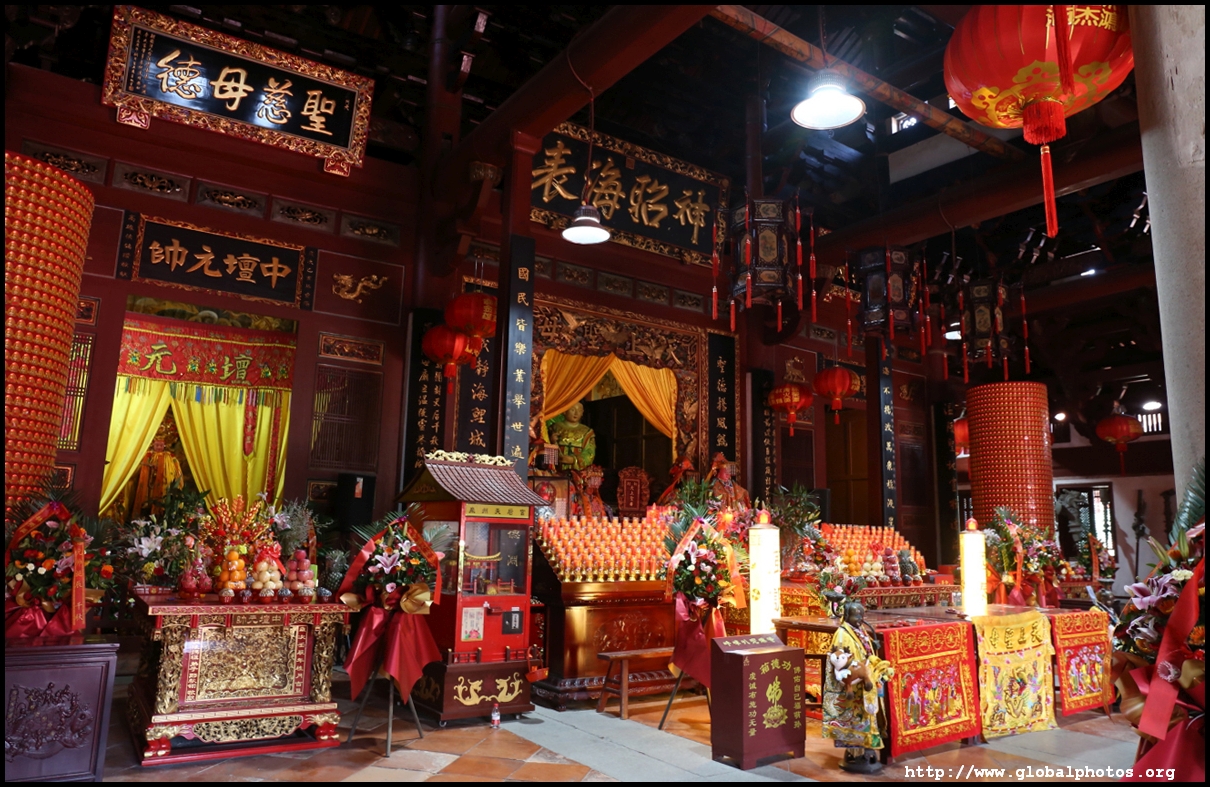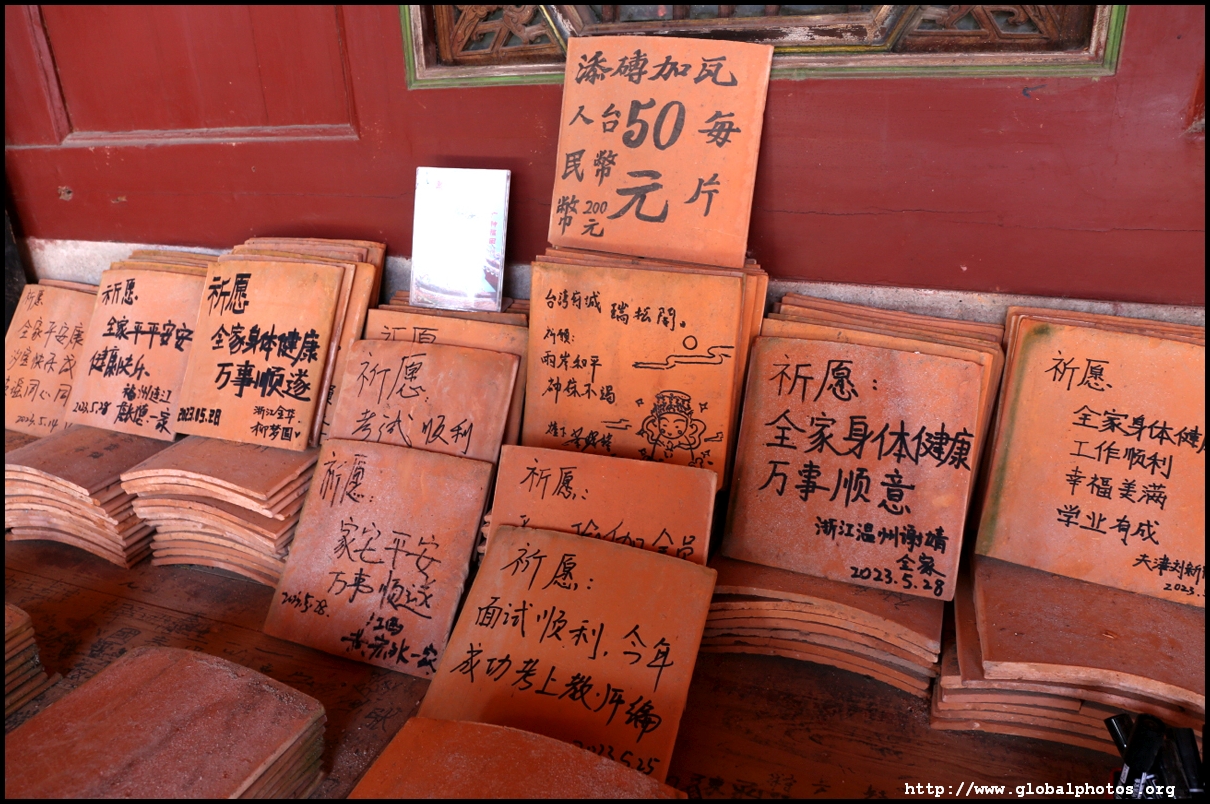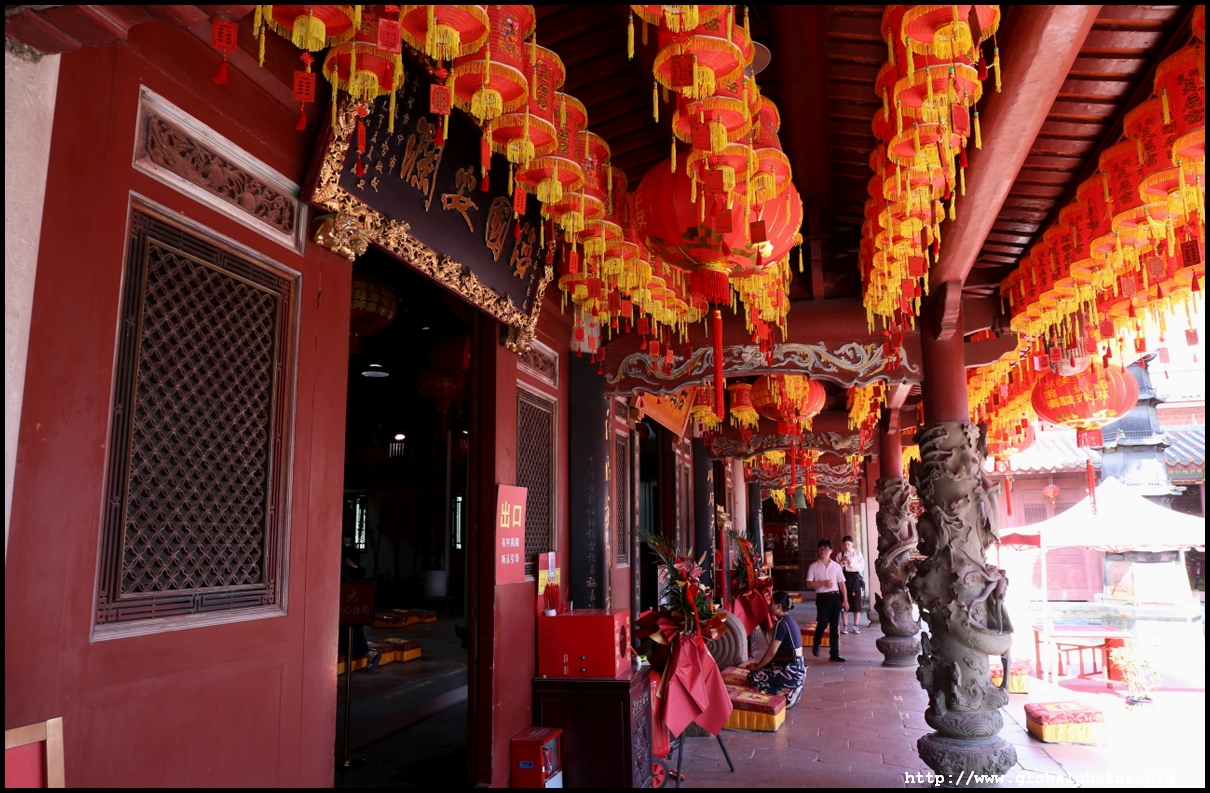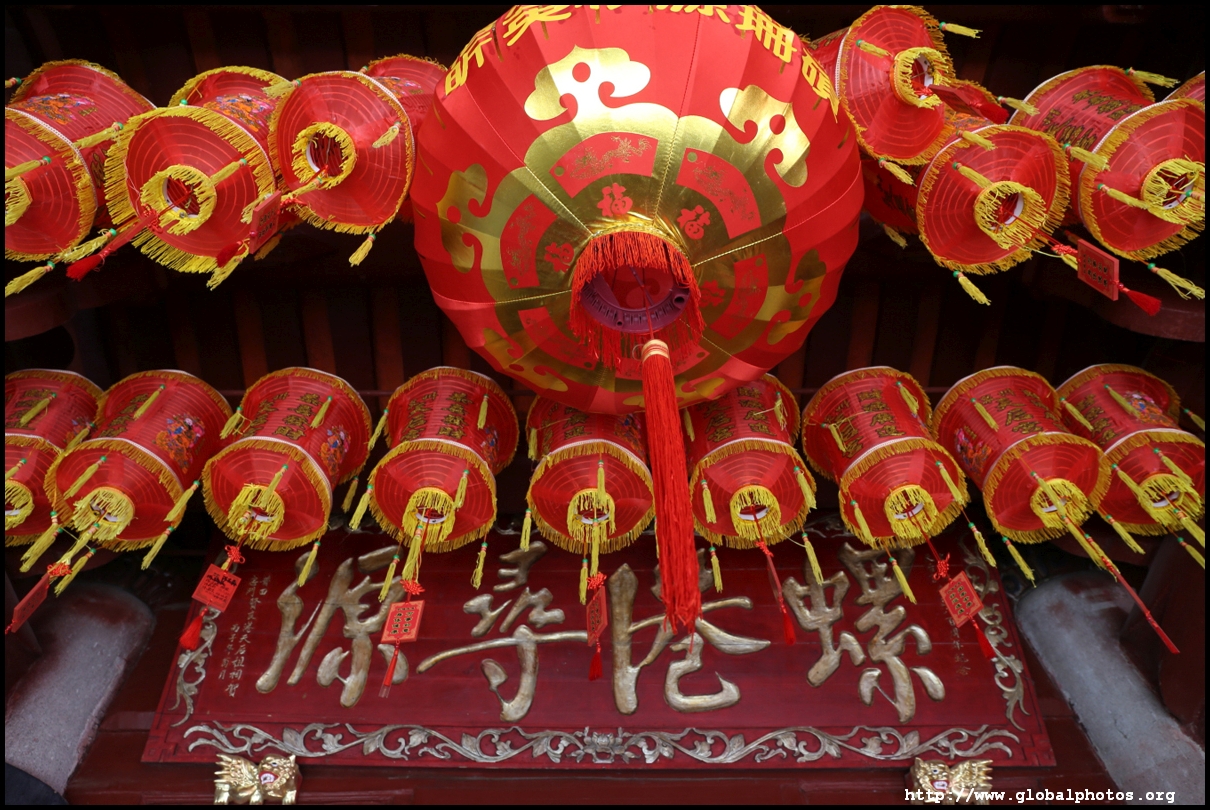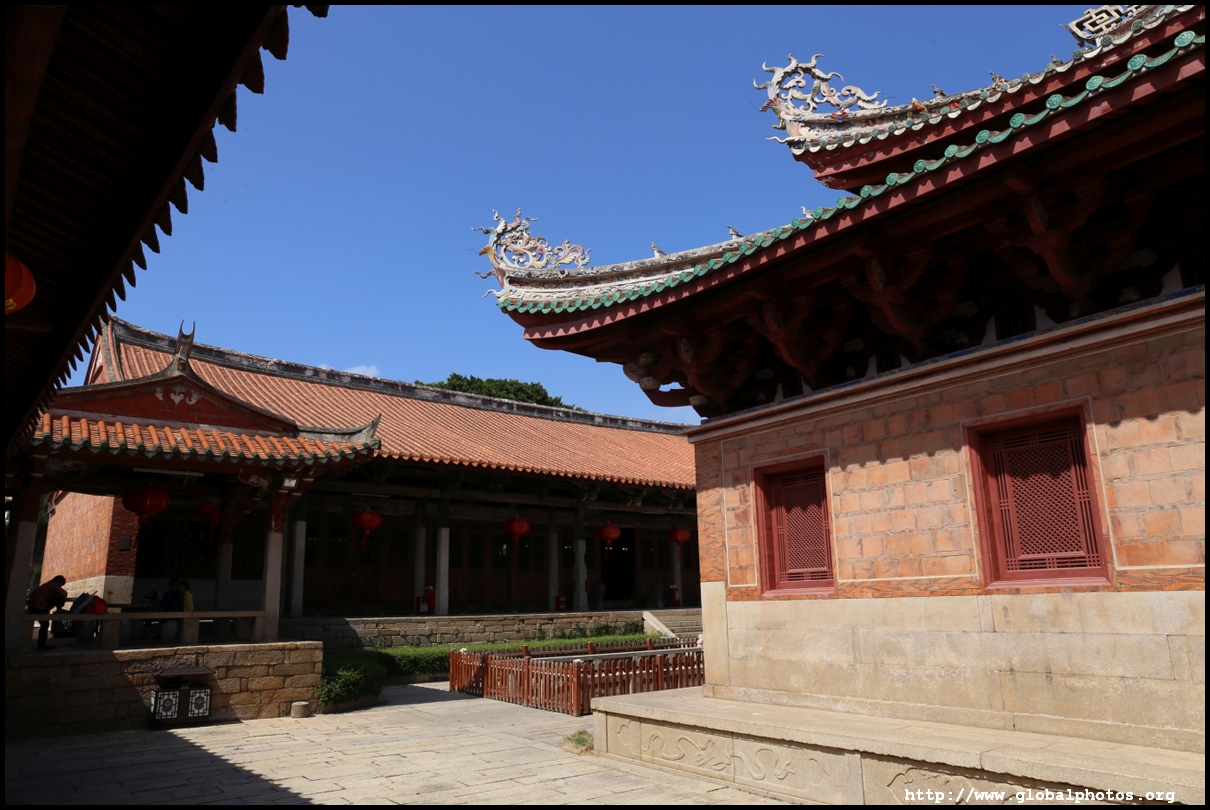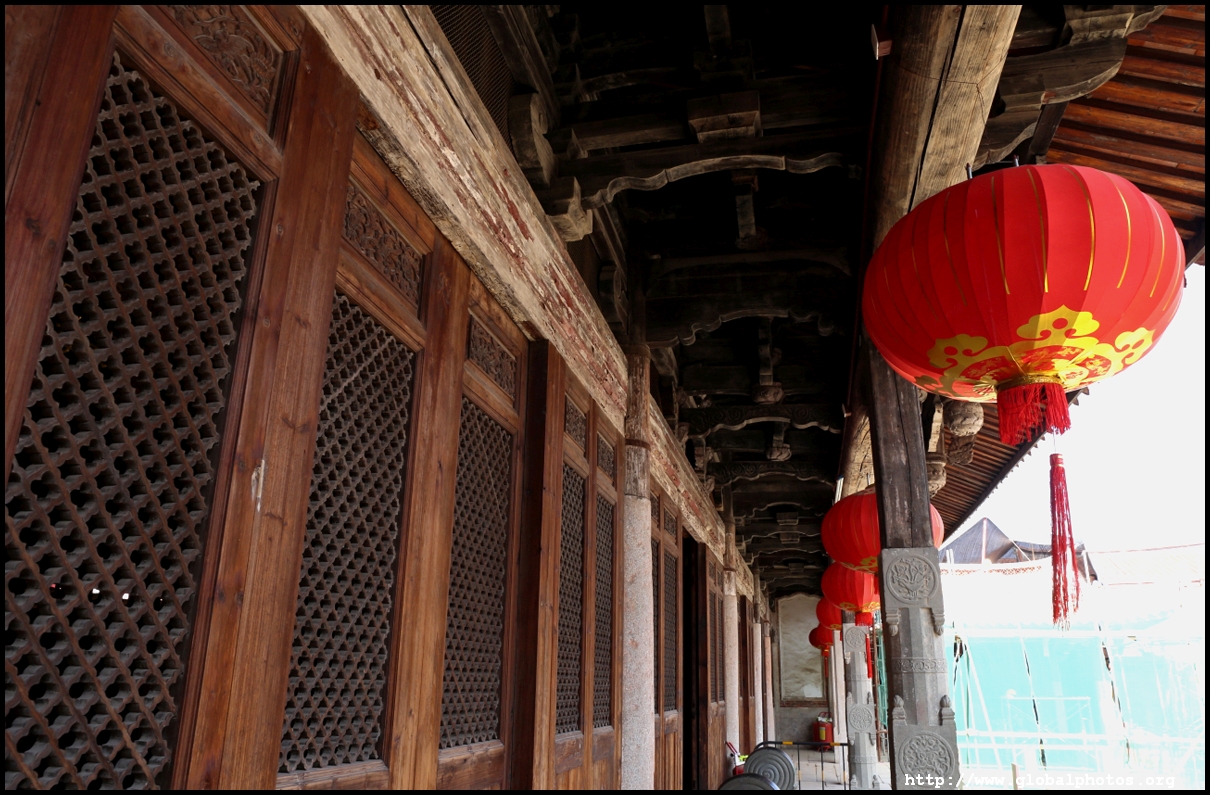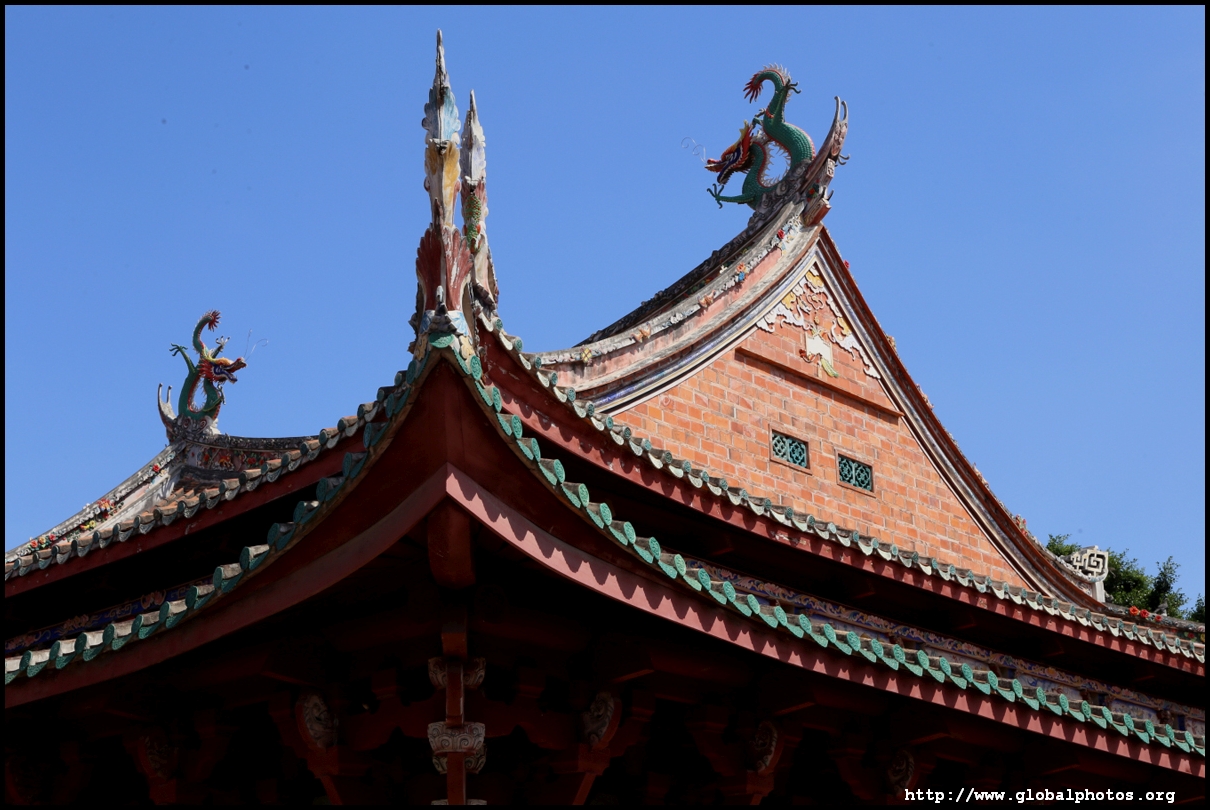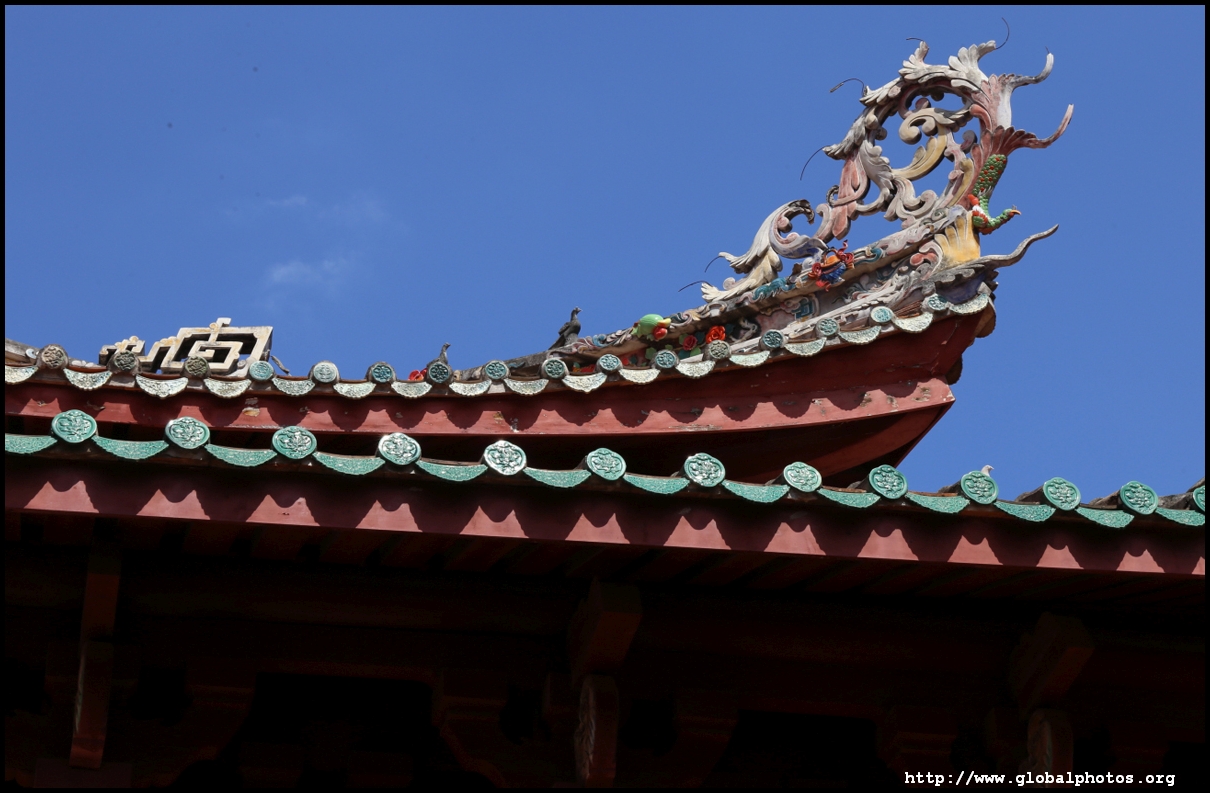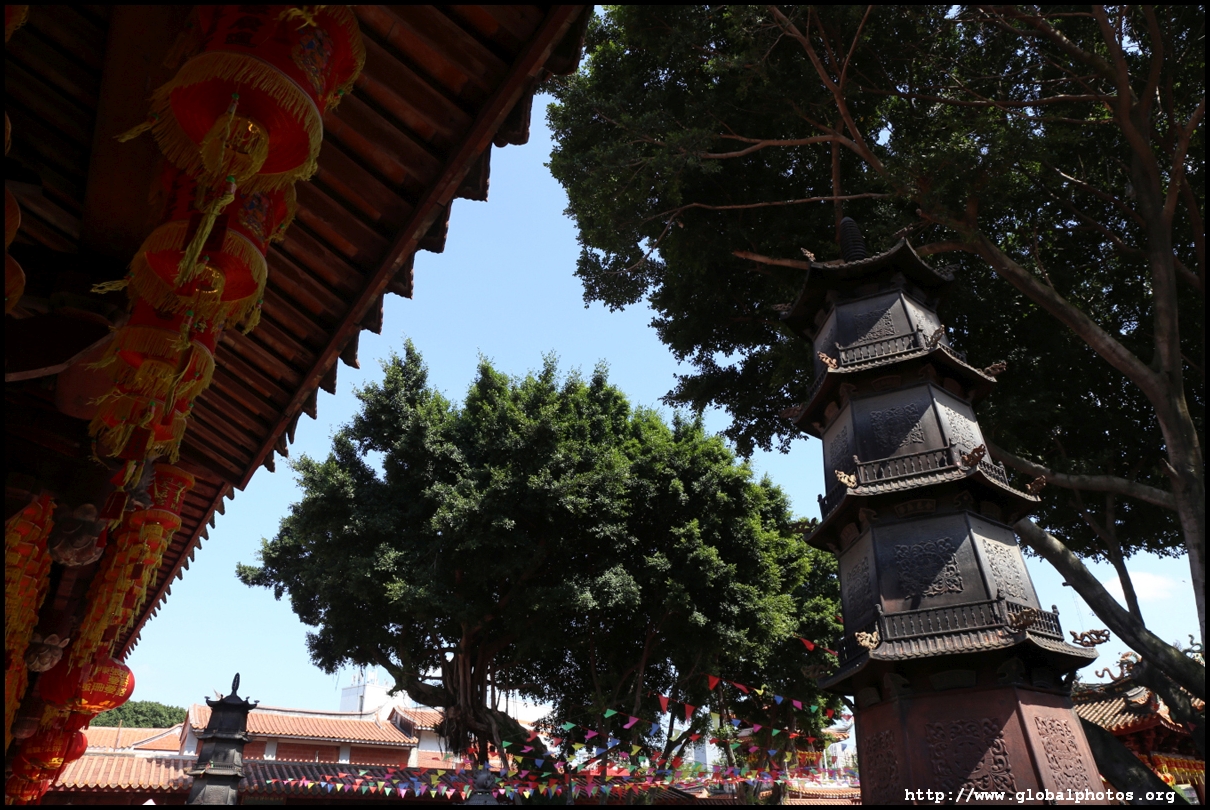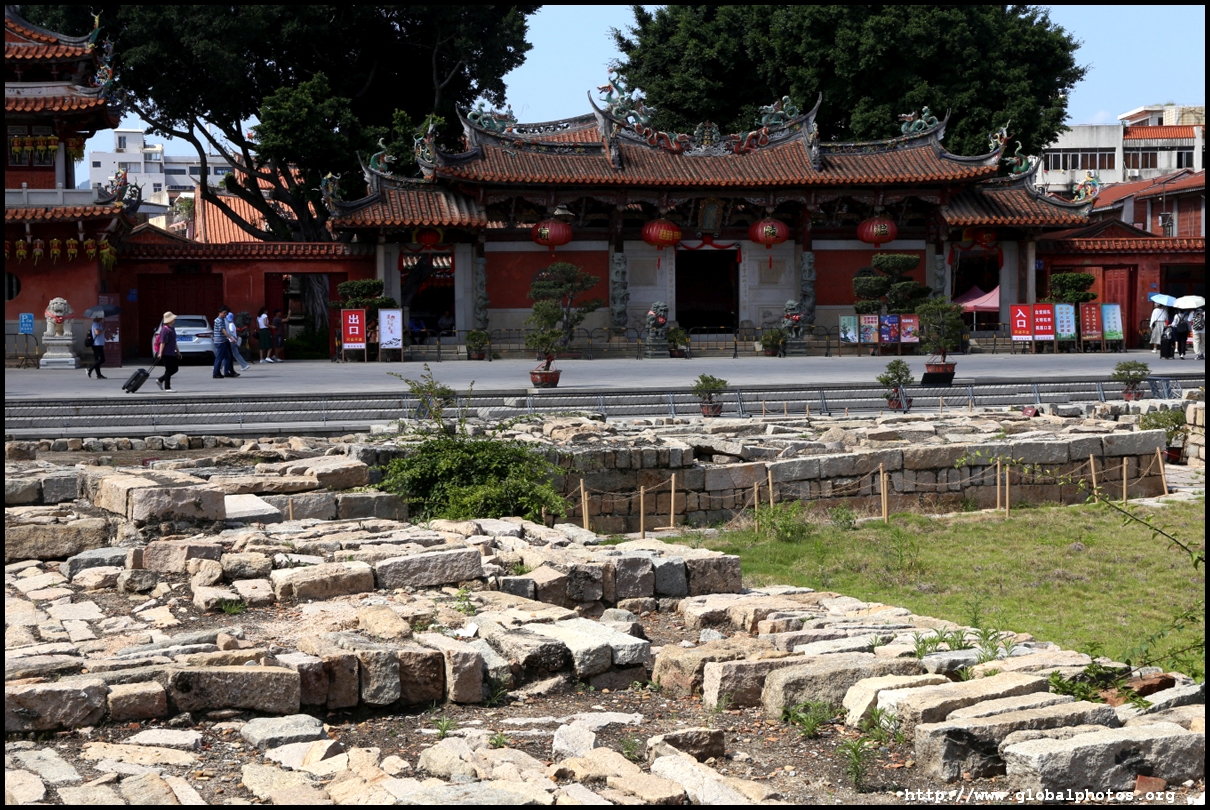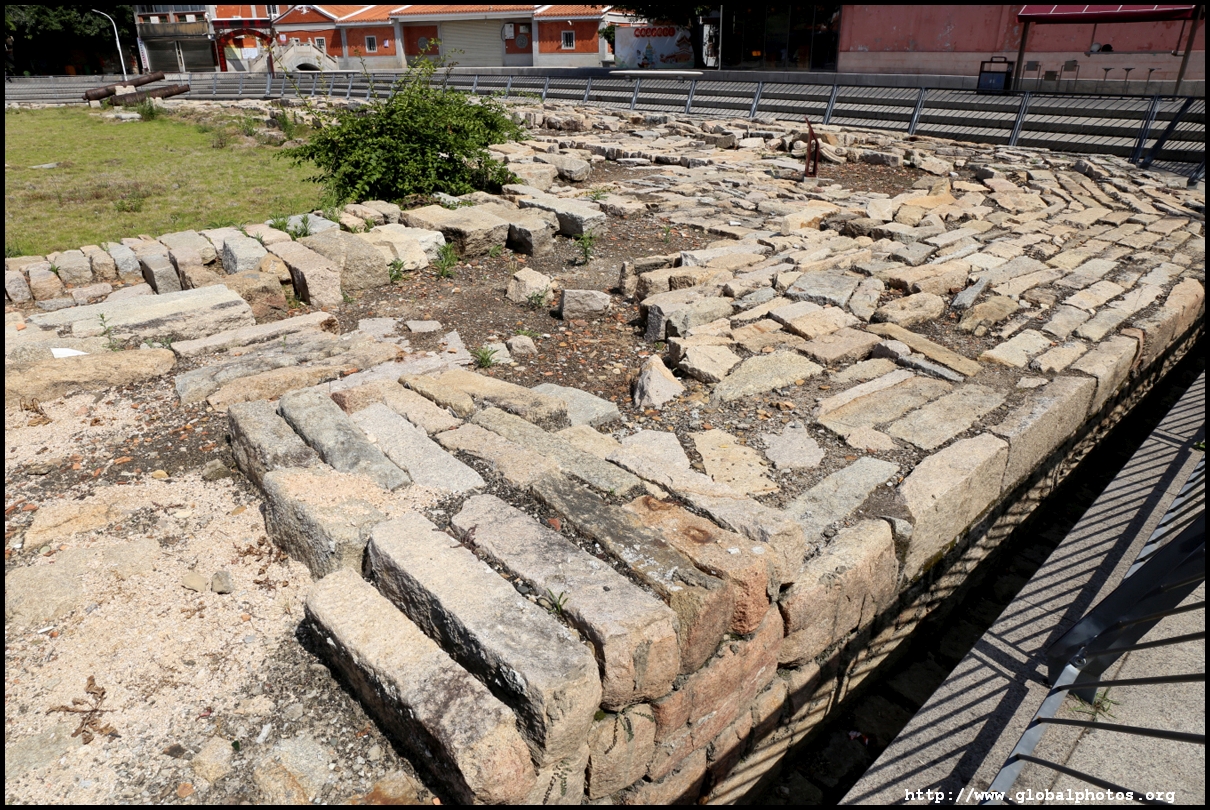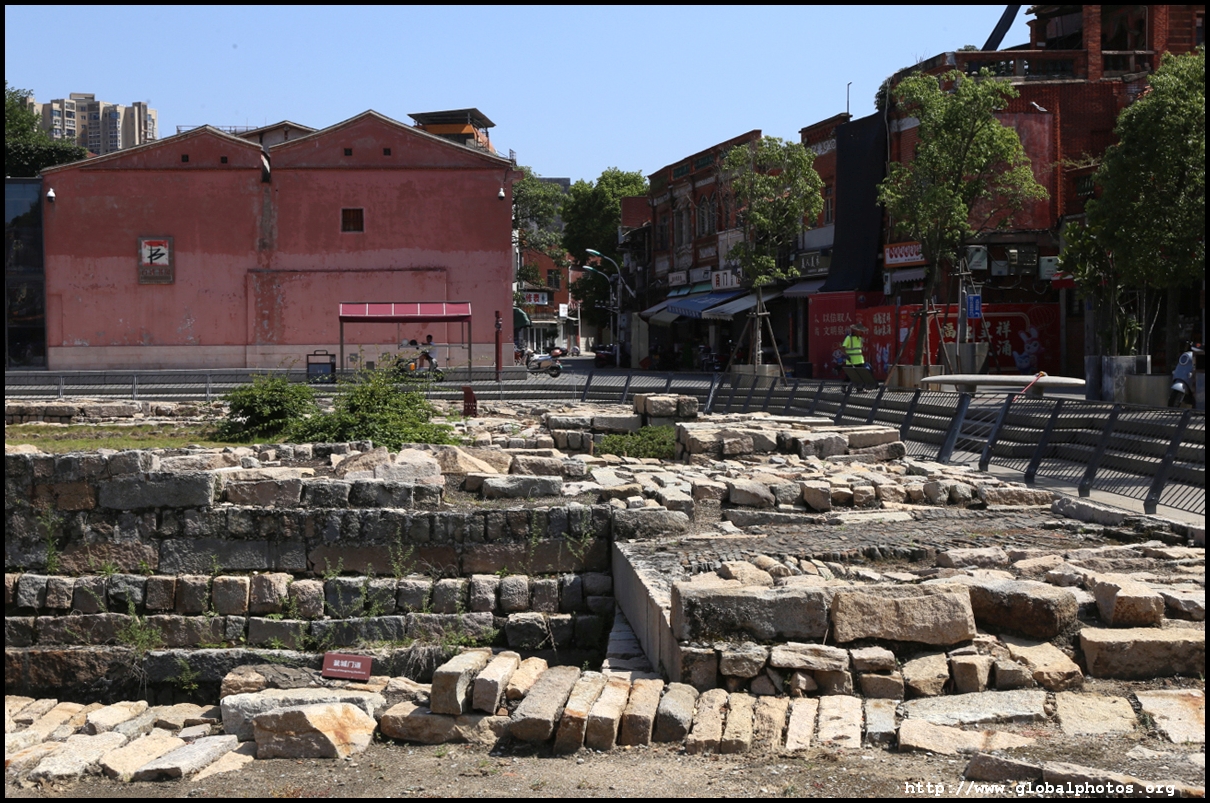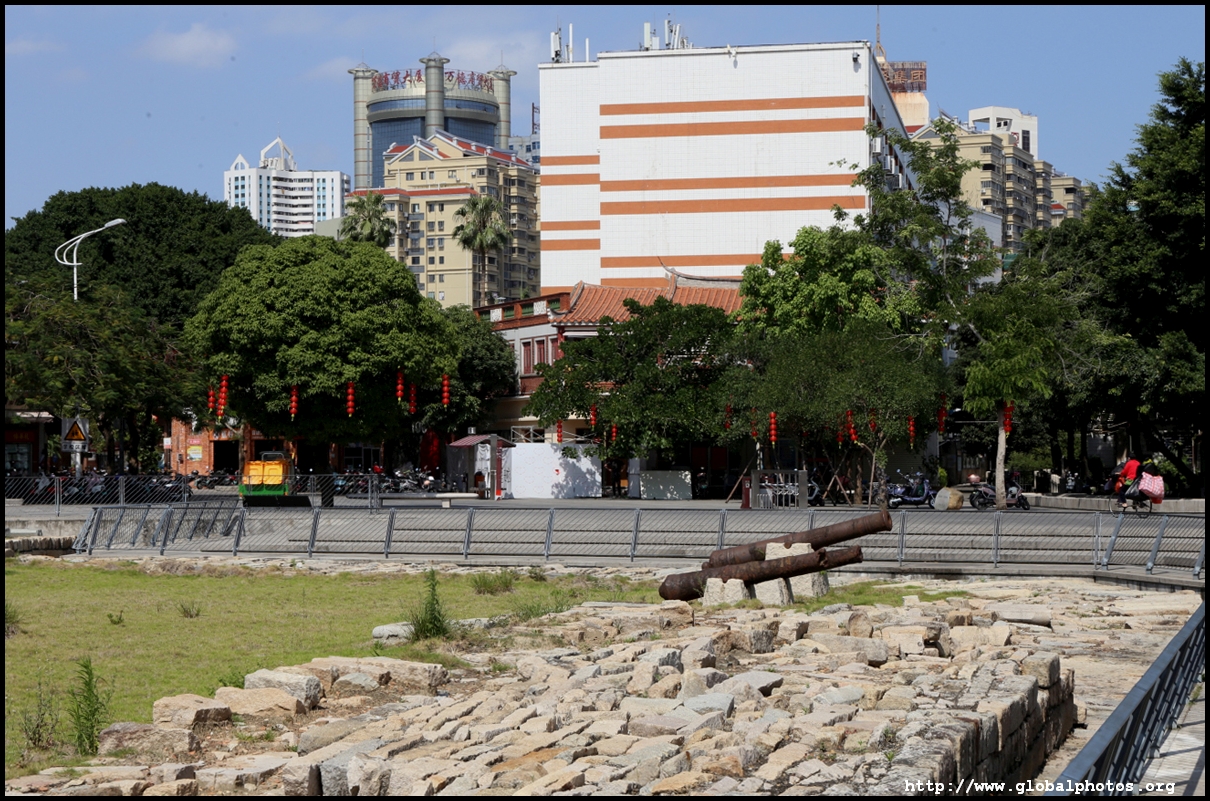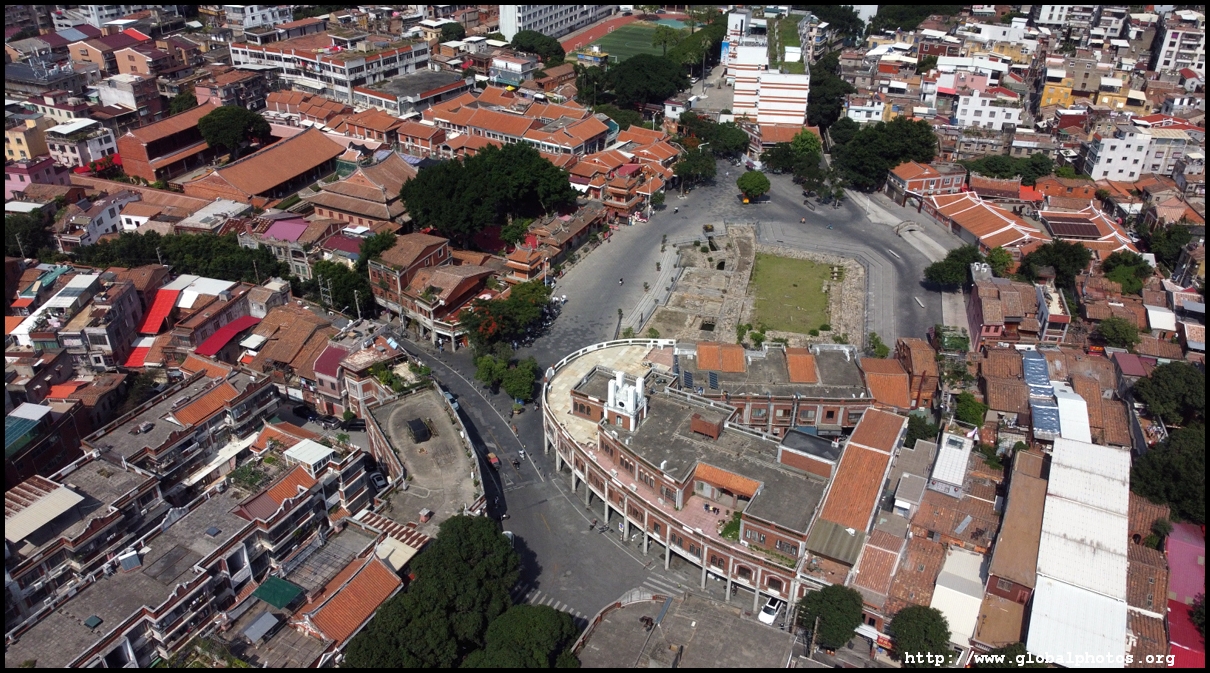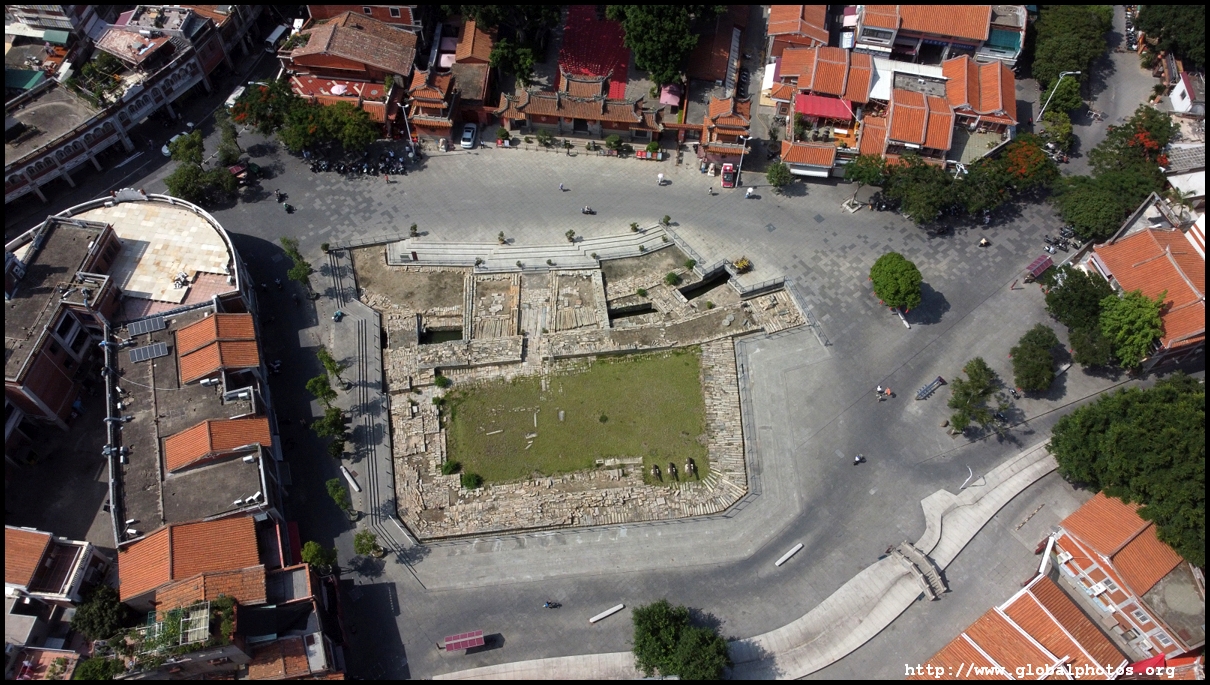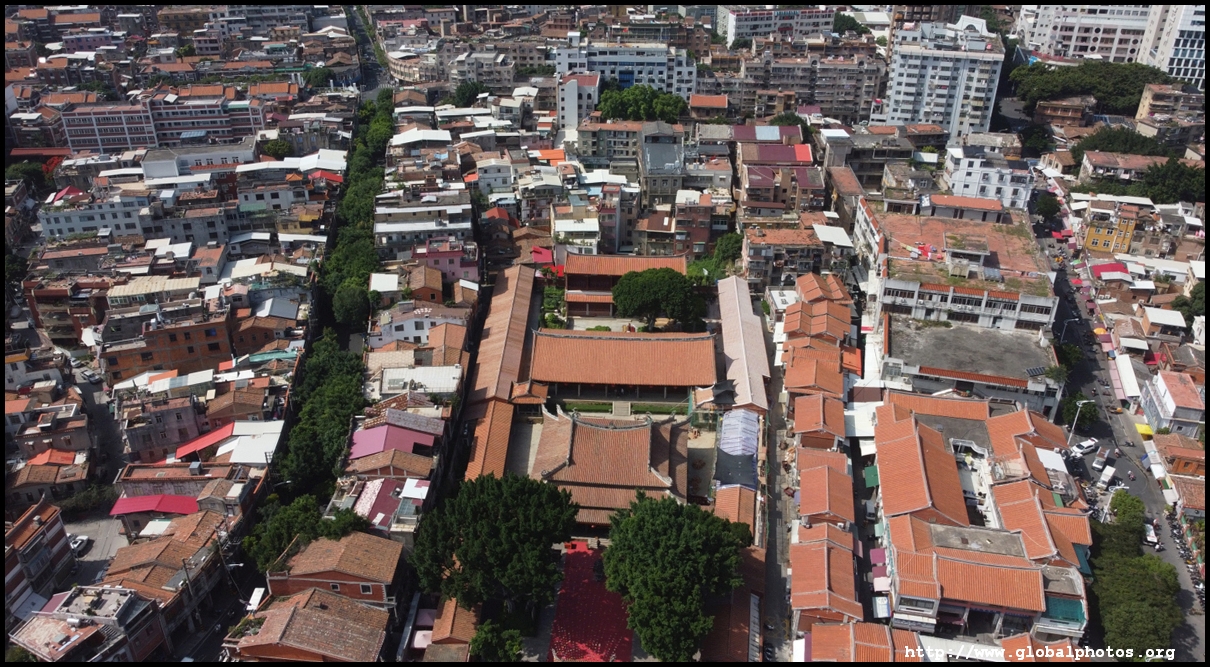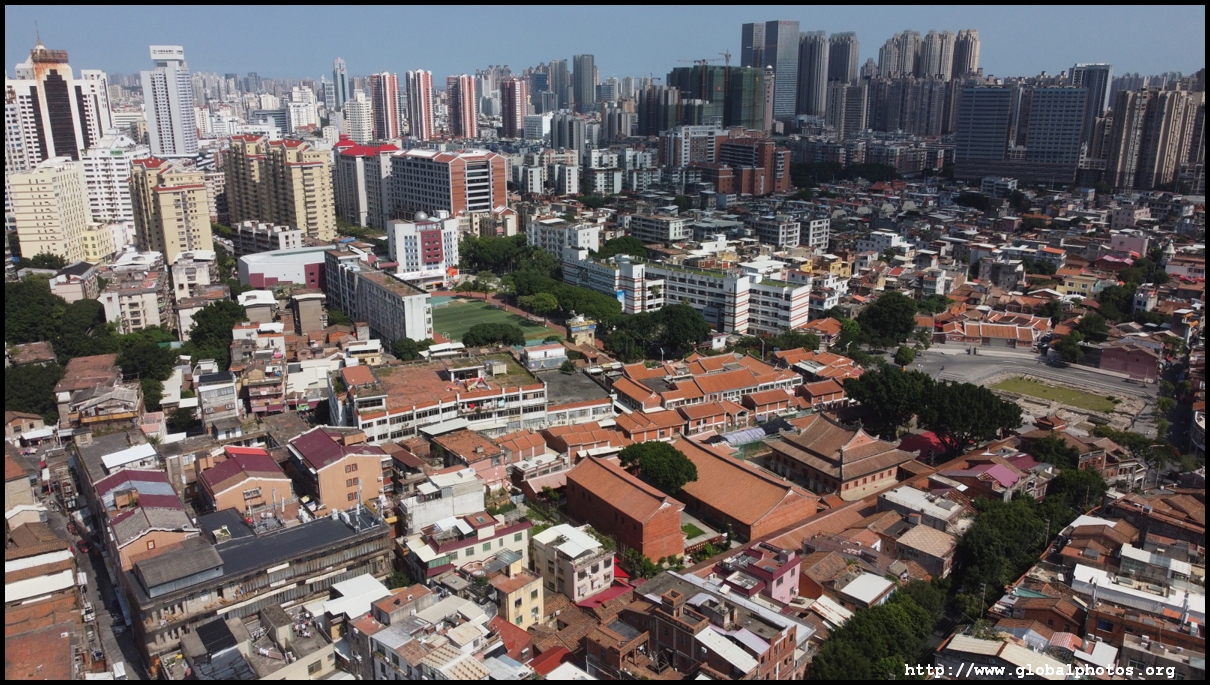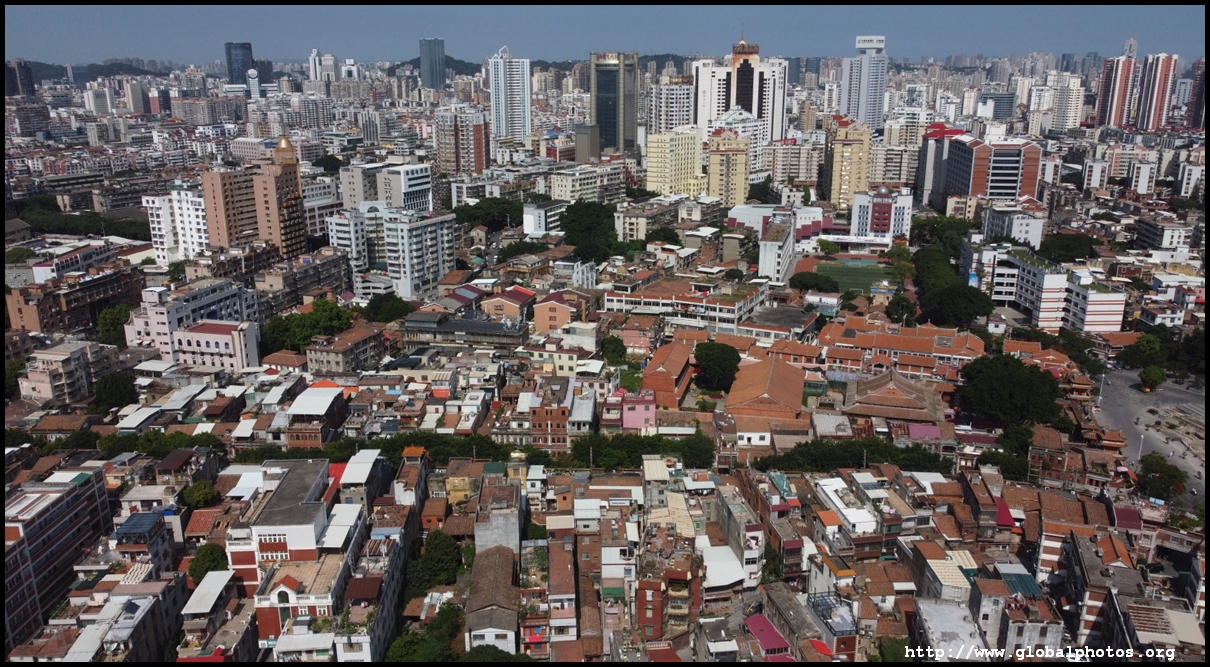Quanzhou Photo Gallery - Tianhou Temple

Tianhou Temple was built in 1196 to worship the sea goddess, Mazu, the most representative traditional belief for maritime merchants. This was the first such temple built in the city, and what we see today are stone foundations from the Song Dynasty and the wooden structure from the 19th century, with the site's buildings spanning some 6800 sq m. At the time, the temple was located in the dock area along the Jinjiang River.Mazu worship is a folk belief that originated in Quanzhou, and subsequently spread through the city's maritime trade. Temples such as this one became a gathering place for merchants, and reverence not only brought protection for their voyages, but also imposed a business ethics code. The government promoted Mazu belief with the governor coming to offer sacrifices at the temple and incorporating them into official events that the imperial court attended.
Located in front of the Tianhou Temple, Deji Gate served as the city's southern boundary during the Song and Yuan dynasties, reflecting the city's southward expansion that began in the 10th century thanks to booming maritime trade. Originally built in 1230, the gate expanded in 1352 and again in the subsequent Ming and Qing dynasties. Today, it is the only gate remaining out of the city's 7.
From the air, the temple and gate ruins are now surrounded by the modern city.
|
||
